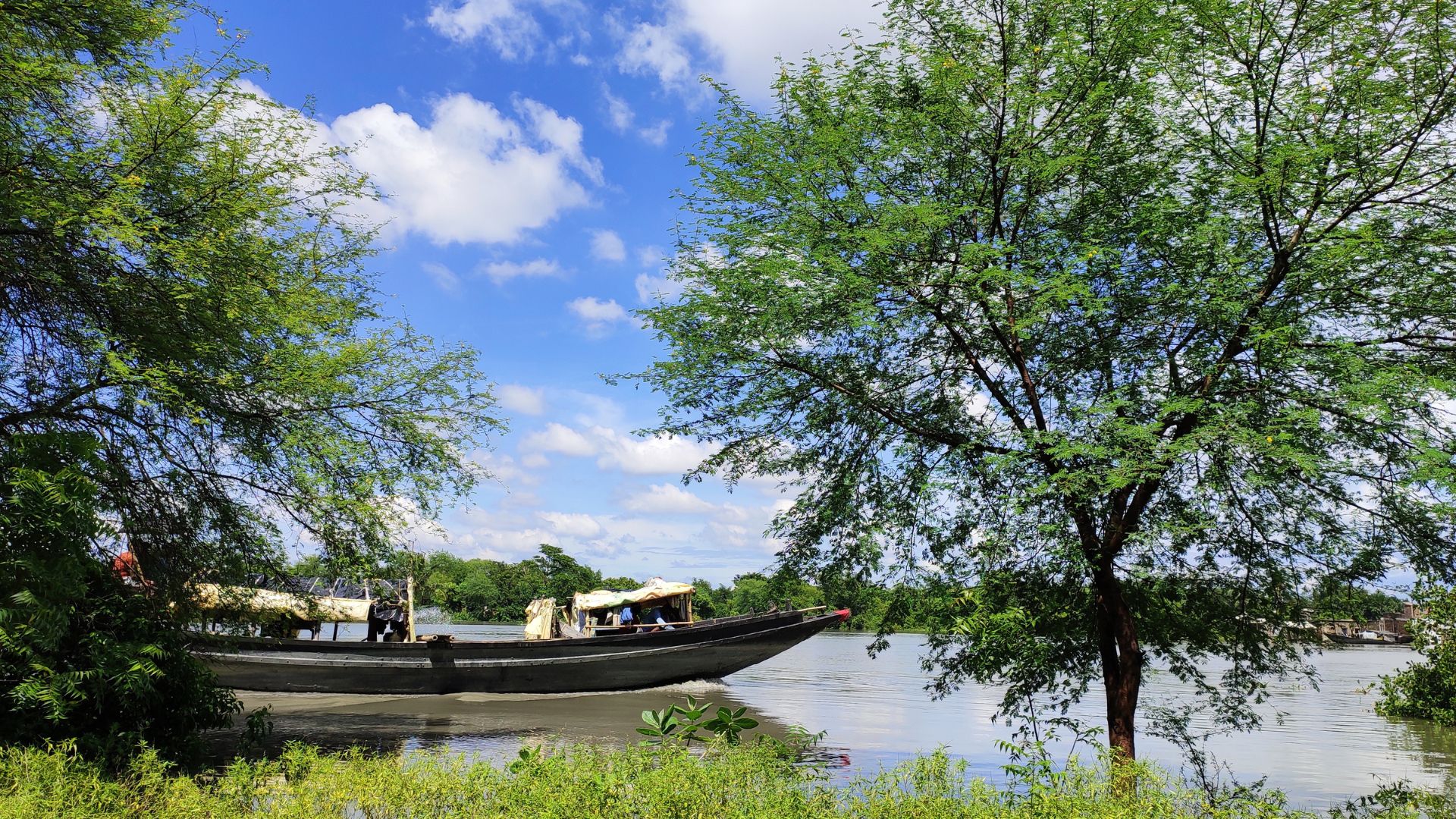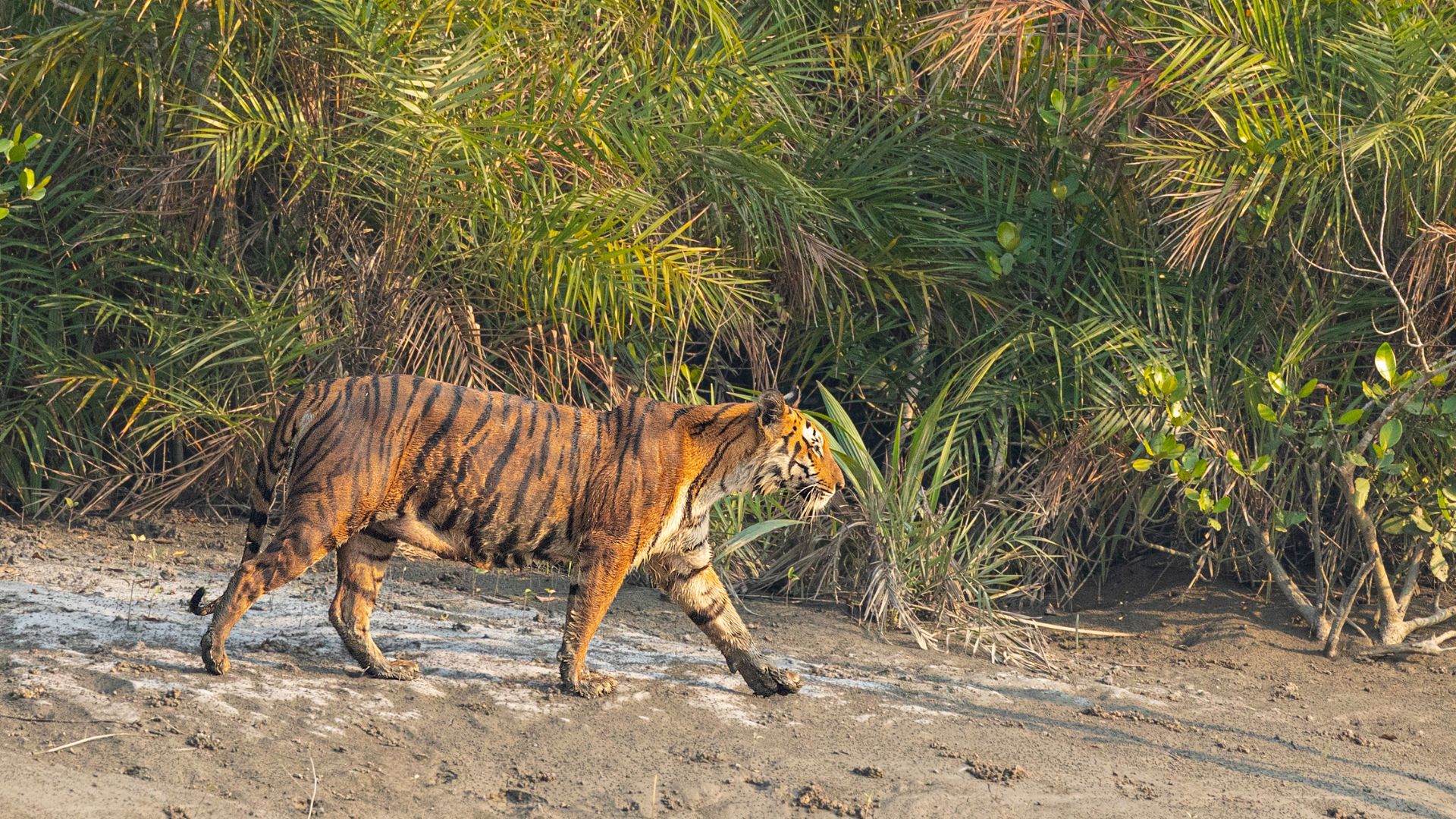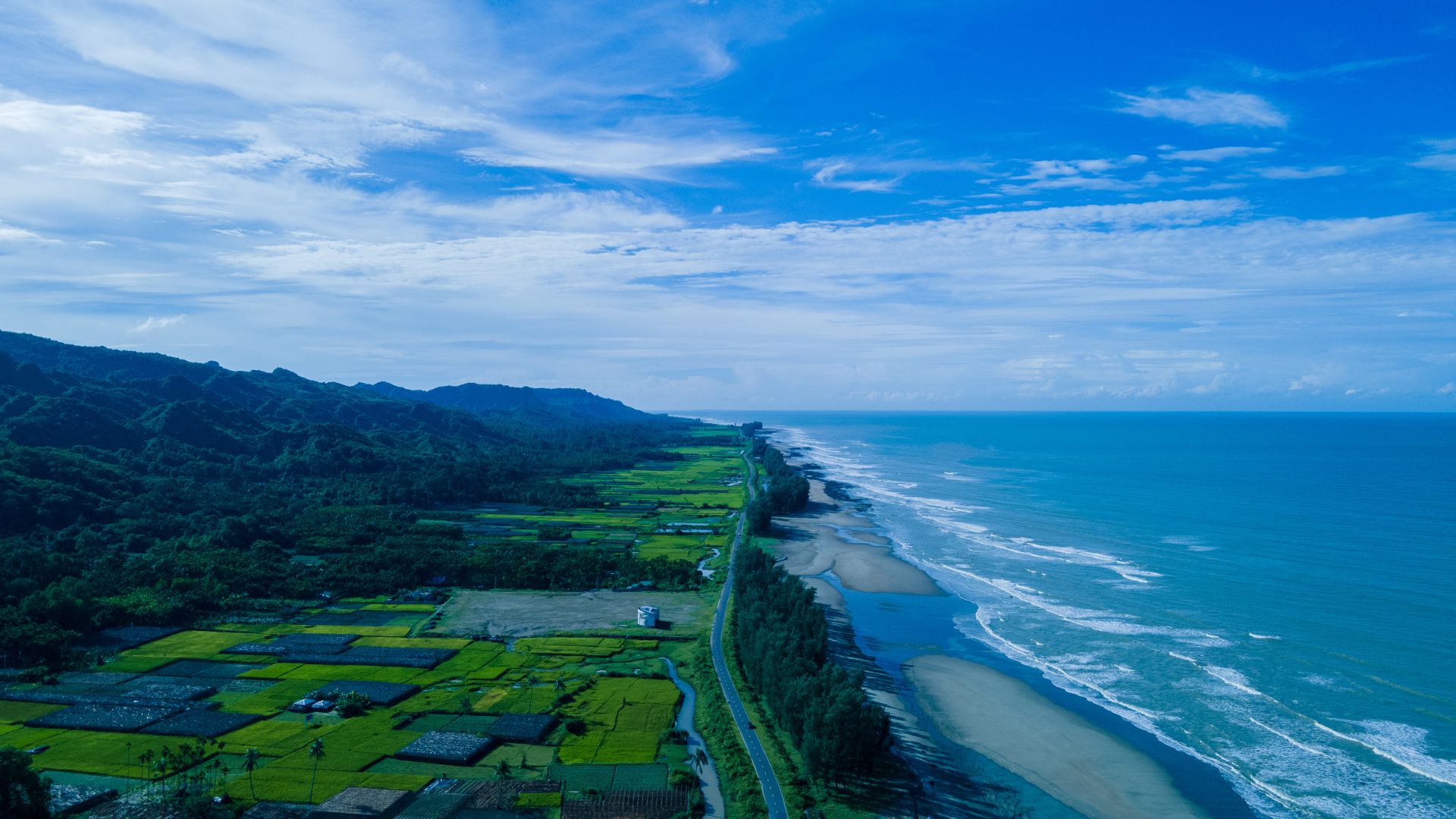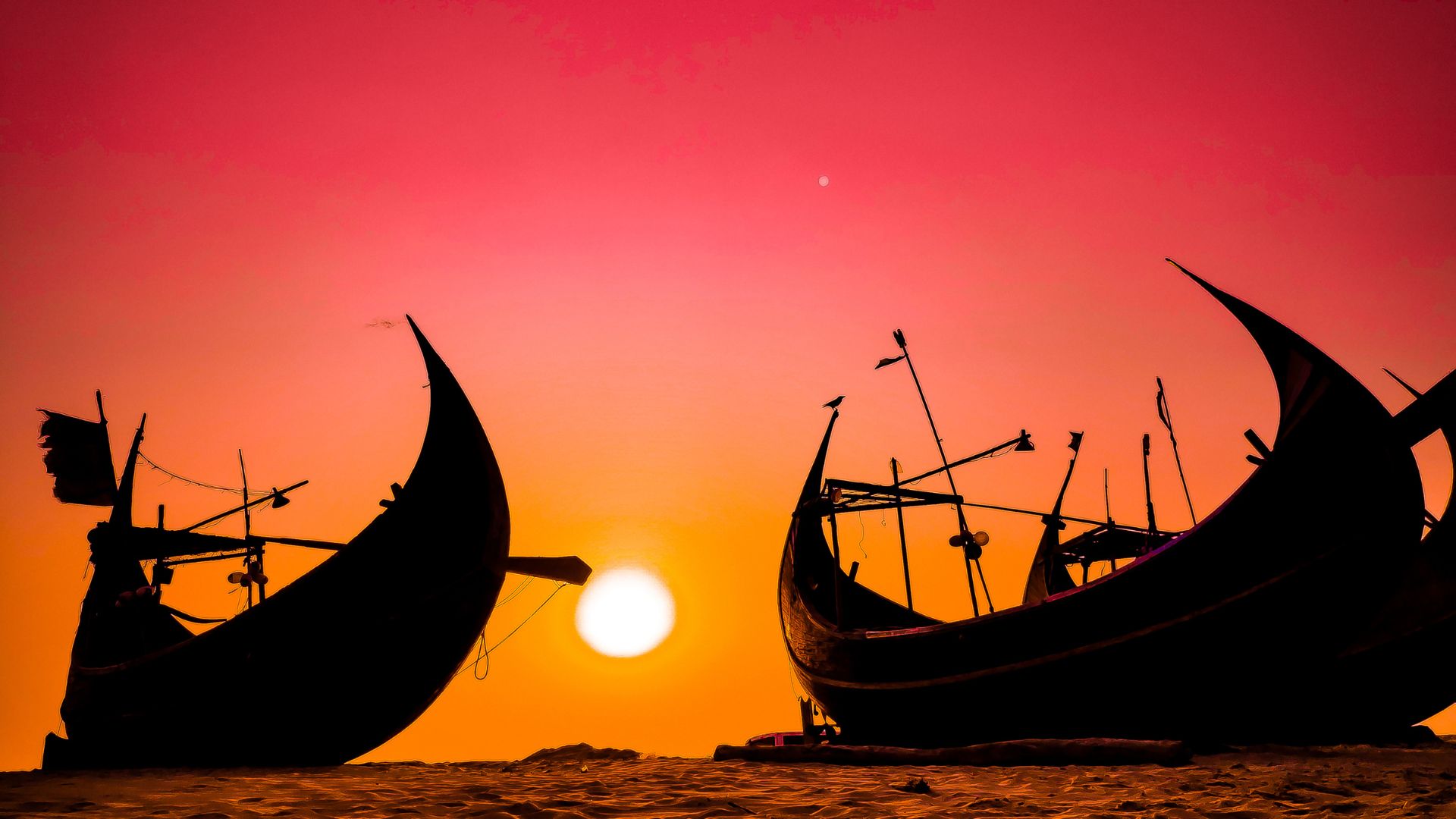If Bangladesh had a "most beautiful division" competition, Sylhet would win—hands down. This isn't just patriotic bias talking; it's a fact backed by rolling tea estates, crystal-clear rivers, misty waterfalls, and forests so enchanting they feel like movie sets.
Located in the northeastern corner of Bangladesh, Sylhet is where nature decided to show off. Hills carpeted in tea plants, rivers that change color with the seasons, swamp forests straight out of fairy tales, and stone-collecting villages that look like scenes from a travel documentary.
But here's the thing: Sylhet isn't just about pretty pictures. It's about standing knee-deep in the crystal waters of Lalakhal, navigating the flooded Ratargul forest by boat, watching tea pickers work their magic on hillside gardens, and feeling the spray of Madhabkunda waterfall on your face.
This guide covers every must-visit spot in Sylhet—from famous attractions to hidden corners tourists miss. Whether you're planning a weekend escape or a full week of exploration, you'll find everything you need right here.
Why Sylhet Should Be on Your Bangladesh Bucket List
Let me be straight with you: if you skip Sylhet, you're missing out on the most naturally diverse region in Bangladesh. Here's why this place is special:
Unique Geography: Sylhet is the only region in Bangladesh with significant hills and tea estates. While most of the country is flat as a pancake, Sylhet gives you actual elevation, valleys, and mountain views (yes, you can see the Meghalaya hills of India from here).
Year-Round Greenery: Thanks to being one of the wettest places in Bangladesh, Sylhet stays lush and green even when other regions turn brown. The monsoon season here is legendary—locals joke that it rains 13 months a year.
Cultural Richness: Sylhet has a distinct cultural identity. The Sylheti dialect, traditional music, and local cuisine set it apart. Plus, the region has deep spiritual significance with numerous shrines and historical sites.
Accessibility: Unlike some remote beautiful places, Sylhet is well-connected. Direct flights from Dhaka take 40 minutes, and road trips are scenic (though long). Once you're there, most attractions are within 1-3 hours of Sylhet city.
Value for Money: Compared to tourist traps elsewhere, Sylhet offers incredible experiences at reasonable prices. You can stay in comfortable accommodations, eat amazing food, and explore stunning locations without breaking the bank.
Ratargul Swamp Forest: Bangladesh's Amazon
Imagine rowing through a flooded forest where trees grow straight out of the water, their roots submerged, creating an otherworldly landscape. That's Ratargul—one of the few freshwater swamp forests in the world and absolutely the most unique natural attraction in Bangladesh.
Why It's Special: During monsoon season (June to October), the forest floods up to 20-30 feet, transforming it into a magical water world. You navigate by boat through tree-lined corridors, with fish swimming around tree trunks and water snakes occasionally making appearances (don't worry, they're more scared of you).
Best Time to Visit: Monsoon season is when Ratargul truly comes alive. The water is high enough for boats to go deep into the forest. During dry season (November to May), water levels drop significantly and you'll mostly walk through muddy paths—still beautiful, but not the same experience.
What to Expect: You'll hire a small engine boat or paddle boat at the entrance. The ride through the forest takes about 45 minutes to an hour. Your boatman will navigate through narrow channels, pointing out wildlife—various birds, monitor lizards, and if you're lucky, otters.
Pro Tips:
- Go early morning (7-9 AM) for the best light and fewer crowds
- Bring mosquito repellent—it's a swamp, after all
- Wear shoes you don't mind getting wet (boats can get splashy)
- Don't expect bathroom facilities once you enter the forest
- Boat costs around 800-1,500 BDT depending on boat type and season
Getting There: Ratargul is about 26 km from Sylhet city in Gowainghat upazila. Hire a CNG (300-400 BDT one way) or private car. The journey takes about 45 minutes. Some people combine Ratargul with Jaflong since they're in the same direction.
Jaflong: Where Bangladesh Meets India
Jaflong is where geography gets dramatic. Located right at the India-Bangladesh border, this is where the Dawki River flows down from the Khasi hills of Meghalaya, bringing with it crystal-clear water and smooth river stones that locals have been collecting for generations.
The Stone Collection Industry: What makes Jaflong unique is the river stone collection process. You'll see workers (mostly women) standing waist-deep in the river, collecting stones that get transported to construction sites across Bangladesh. It's hard work, but it's also oddly mesmerizing to watch—hundreds of people working in synchronization with the river's rhythm.
The Dawki River Experience: The main attraction is the Dawki River itself. During winter (November to March), the water is unbelievably clear—you can see fish swimming and rocks on the riverbed even in deep sections. The turquoise color against the backdrop of Meghalaya hills creates Instagram-worthy views at every angle.
Activities at Jaflong:
- River Walk: Wade into the shallow parts of the river. The water is cold but refreshing
- Stone Market: Browse through piles of colorful river stones. Locals sell them as decorative pieces
- Hanging Bridge: Cross the suspension bridge for panoramic views of the area
- Border Views: You can literally see India from here—the Khasi hills are right across
- Local Khasi Villages: Visit nearby indigenous Khasi communities if you have time
Best Time to Visit: Winter months (November to February) when water is clearest and weather is perfect. Avoid monsoon season—the river becomes dangerously high and murky.
Important Notes:
- Jaflong can get extremely crowded on weekends and holidays
- Go early morning (before 10 AM) to avoid tour groups
- Bargain hard at stone markets—initial prices are inflated for tourists
- Don't venture too deep into the river—currents can be deceptive
- Keep your passport/ID handy—it's a border area with occasional checks
Getting There: Jaflong is about 60 km from Sylhet city, roughly 2-2.5 hours by road. Hire a private car (2,500-3,500 BDT round trip) or join a tour group. The road journey is scenic, passing through tea estates and villages.
Lalakhal: The Blue River Mystery
If Jaflong is dramatic, Lalakhal is ethereal. This tributary of the Sari River is famous for one thing: its otherworldly blue-green color that changes with seasons and time of day. On a sunny winter morning, the water looks like liquid turquoise—completely unreal.
Why the Blue Color? The scientific explanation involves mineral content and riverbed composition, but honestly, standing there looking at it feels more like magic than science. The color shifts throughout the day—deep blue in morning light, green in afternoon, and sometimes crystal clear during certain seasons.
The Boat Ride Experience: You explore Lalakhal by engine boat, cruising along the river surrounded by hills on both sides. The journey takes you through areas where the river narrows between cliffs, opens into wide stretches, and passes tea gardens that roll down to the water's edge.
What Makes It Special:
- The color—seriously, it doesn't look real
- Peaceful atmosphere—much less crowded than Jaflong
- Tea garden views from the river
- Photo opportunities at every bend
- Spotting local fishing boats and occasional kingfishers
Practical Information:
- Boat Rental: 1,500-2,500 BDT for a full boat (fits 6-8 people), trips last 1-2 hours
- Best Time: October to March, early morning for best light and color
- What to Bring: Camera, sunscreen, water, and snacks (no facilities on the river)
- Swimming: Possible in some areas, but water is cold year-round
Pro Tip: Combine Lalakhal with Jaflong in one day trip. They're in the same direction from Sylhet, about 10 km apart. Start with Lalakhal early morning (for best light and colors), then head to Jaflong for lunch and afternoon exploration.
Getting There: Lalakhal is near Jaflong, about 55-60 km from Sylhet city. Most people visit both in the same trip. The boat launching area (ghat) is clearly marked, with local guides offering boat services.
Tea Gardens: Sylhet's Green Gold
Sylhet is synonymous with tea. The region produces most of Bangladesh's tea, and visiting a tea estate isn't just sightseeing—it's understanding a crucial part of Bangladesh's economy and cultural identity.
What Makes Sylhet Tea Gardens Special: Unlike the flat tea plantations you might see elsewhere, Sylhet's tea gardens spread across rolling hills. The layers of green stretching to the horizon, with tea pickers in colorful clothes adding splashes of color, create landscapes that photographers dream about.
Top Tea Gardens to Visit:
1. Srimangal Tea Gardens (Lawachara Area):
While technically in Moulvibazar district, Srimangal is the tea capital and deserves mention. Home to over 150 tea estates, this is where you should go for the full tea experience. The roads between estates offer stunning views, and several gardens welcome visitors.
2. Malni Chara Tea Garden:
About 40 km from Sylhet city, this is one of the most accessible estates. Beautiful hillside location with walking trails through the plantation. Many tour operators include this in Sylhet day trips.
3. Tarapur Tea Garden:
Located near Jaflong road, this makes an excellent stop on the way to or from Jaflong. The gardens roll down hills with fantastic valley views.
What You Can Do at Tea Gardens:
- Photo Walks: Wander through the endless rows of tea bushes. Morning is best for light and mist
- Watch Tea Picking: Tea pickers (mostly women) work with incredible speed and precision. It's fascinating to watch
- Tea Tasting: Some estates offer tea tasting sessions where you can sample different varieties
- Factory Tours: A few gardens allow factory visits to see how tea leaves become the tea you drink
- Sunrise/Sunset Views: The gardens at golden hour are spectacular
Etiquette and Tips:
- Most gardens are private property—ask permission before entering
- Don't disturb tea pickers while they work
- Respect "no entry" signs near factory areas
- Wear comfortable shoes—tea estates can be muddy
- Consider hiring a local guide who has relationships with estate managers
Hazrat Shah Jalal Mazar: Spiritual Heart of Sylhet
Beyond natural beauty, Sylhet holds deep spiritual significance. The shrine (mazar) of Hazrat Shah Jalal, a 14th-century Sufi saint, is one of the most visited religious sites in Bangladesh.
Historical Significance: Shah Jalal arrived in Sylhet in 1303 and played a crucial role in spreading Islam in the region. His shrine has been a pilgrimage site for over 700 years, attracting millions of visitors from Bangladesh and around the world.
What to Expect: The complex includes the main shrine, a large mosque, courtyards, and a pond famous for its sacred catfish (gazar). The atmosphere is peaceful despite crowds, with constant prayers and Quran recitations creating a meditative environment.
The Sacred Catfish: In the pond beside the shrine, you'll see hundreds of catfish that devotees believe are blessed. People feed them (fish food available at the entrance), and there's a folk belief that the fish can grant wishes.
Visitor Information:
- Entry: Free, but donations welcome
- Dress Code: Modest clothing required. Women should cover heads (scarves available if needed)
- Best Time: Early morning or late afternoon to avoid peak crowds
- Friday: Extremely crowded after Jummah prayers—avoid unless you want the full experience
- Shoes: You'll remove shoes before entering the shrine area—wear socks
Nearby: After visiting the shrine, explore the surrounding area. There are traditional sweet shops selling special Sylheti sweets, religious bookstores, and vendors selling prayer items. The old town area near the shrine has historical buildings and traditional markets worth exploring.
Madhabkunda Waterfall: Nature's Power Display
Madhabkunda is Bangladesh's most famous waterfall, and for good reason. Water cascades down from a height of about 200 feet, creating a thunderous sound and perpetual mist that you can feel from hundreds of meters away.
The Experience: The approach to the waterfall is an adventure itself. You'll walk through dense forest, crossing small streams, hearing the roar of water getting louder with each step. Then you turn a corner, and there it is—a massive curtain of water crashing down into a pool below.
What to Do:
- Get Close: Follow the path to viewing points. During dry season, you can walk right up to the base (prepare to get soaked)
- Swimming: The pool at the bottom is swimmable during low water periods. The water is freezing cold—refreshing on hot days
- Photography: The waterfall with surrounding greenery creates dramatic photos. Best light is midday when sun hits the falls
- Picnic Areas: Designated spots around the waterfall for families
- Short Hikes: Trails through the surrounding forest for nature walks
Seasonal Differences:
Monsoon (June-September): Waterfall at its most powerful. The volume of water is incredible, but you can't get as close. The mist creates rainbows on sunny days.
Winter (November-February): Water flow is gentler, allowing closer access. You can actually swim and stand near the base. Still beautiful, just less dramatic.
Practical Tips:
- Entry fee: 20-30 BDT for locals, higher for foreigners
- Wear waterproof bags for electronics—everything gets wet
- Good walking shoes essential—rocks can be slippery
- Come early (before 10 AM) to avoid crowds, especially on weekends
- Facilities available: basic restaurants, prayer rooms, restrooms
Getting There: Madhabkunda is in Moulvibazar district, about 70 km from Sylhet city (2-2.5 hours drive). Most people hire cars or join tour groups. The road passes through tea estates and forests—scenic but can be bumpy.
Bisnakandi: The Hill Stone Paradise
If you want "middle of nowhere" beauty, Bisnakandi delivers. This is where mountains, rivers, stone collections, and clouds literally touching the ground come together to create something magical.
What Makes It Special: Bisnakandi sits at the India-Bangladesh border where the Umngot River flows down from Meghalaya's mountains. The riverbed is full of massive boulders and stones, creating a dramatic landscape. On cloudy days, low-hanging clouds and mist make it feel like you're in the Himalayas.
The Journey Is the Destination: Getting to Bisnakandi involves a boat ride through shallow waters, passing by stone collection sites where workers extract rocks from the riverbed. The scenery changes every few minutes—open river stretches, narrow passages between cliffs, and views of hills on both sides.
Activities:
- Boat Exploration: Navigate the river channels and see stone collection in action
- Rock Hopping: Walk across the boulder-filled riverbed (dry season only)
- Cloud Watching: Seriously, clouds here behave differently. They roll down hills and sit on the river
- Photography: Every direction is photo-worthy—mountains, river, stones, clouds
- Border Views: You're so close to India you can see people on the other side
Best Season: November to March for the best weather and most dramatic cloud formations. Monsoon season is risky—water levels rise dangerously high.
Important Warnings:
- This is remote—no facilities, no restaurants, bring your own food and water
- Mobile network can be spotty
- Hire experienced boatmen who know the river
- Weather changes quickly—carry rain gear
- Not wheelchair accessible or suitable for elderly with mobility issues
Getting There: About 30 km from Sylhet towards Gowainghat. You'll need to drive to the boat launch point, then take a 30-45 minute boat ride (engine boat recommended). Most visitors combine with Ratargul since they're in the same area.
Planning Your Sylhet Trip: Practical Information
How Many Days Do You Need?
2-3 Days (Weekend Trip): Covers main highlights—Ratargul, Jaflong, Lalakhal, and maybe Madhabkunda or one tea garden. You'll be rushed but can hit the major spots.
4-5 Days (Recommended): Allows comfortable exploration without rushing. You can do all major attractions plus some hidden gems, have time for sunrise/sunset at tea gardens, and actually relax.
7+ Days (Deep Dive): For serious explorers. Cover everything, including lesser-known spots like Bisnakandi, multiple tea estates, spiritual sites, and day trips to nearby areas like Srimangal.
Best Time to Visit Sylhet:
October to March (Peak Season): Best weather overall. Clear skies, comfortable temperatures (15-25°C), perfect for outdoor activities. Water in rivers is clearest. This is when Sylhet looks like those Instagram photos.
June to September (Monsoon): Ratargul and waterfalls at their most dramatic. Everything is green and lush. However, heavy rain can make travel difficult, some roads flood, and outdoor activities get limited. Only recommended if you don't mind rain.
April to May (Hot Season): Very warm and humid. Not ideal but manageable if you start early morning and rest during midday heat. Accommodation prices are lowest.
Getting to Sylhet:
By Air (Fastest): Sylhet Osmani International Airport has multiple daily flights from Dhaka (40 minutes). Airlines: Biman Bangladesh, US-Bangla, Novoair. Book in advance during peak season. Expect 3,500-6,000 BDT one way.
By Road: From Dhaka, about 230 km (6-8 hours depending on traffic). Options:
- Bus Services: Shyamoli, Green Line, Hanif, Ena Transport run AC/non-AC buses (400-1,200 BDT)
- Private Car: Hire through car rental services (8,000-12,000 BDT round trip)
- Train: Parabat Express from Dhaka to Sylhet (slower but scenic, 600-1,500 BDT)
Getting Around Sylhet:
Within City: CNGs (auto-rickshaws) are everywhere. Easy ride apps like Pathao and Uber work in Sylhet city. Local buses available but crowded.
To Attractions: Most tourist spots are outside the city:
- Hire a Private Car: Best option for flexibility. Full day with driver: 3,500-5,000 BDT
- Join Tour Groups: Many operators run daily tours covering multiple spots (1,500-2,500 BDT per person)
- CNGs: Can negotiate for longer trips but uncomfortable for multiple destinations
Where to Stay:
Budget (500-1,500 BDT): Guesthouses near Bandarbazar area, Hotel Skylark, Hotel Golden City. Basic but clean.
Mid-Range (2,000-4,000 BDT): Hotel Noorjahan Grand, Rose View Hotel, Hotel Star Pacific. Comfortable rooms, good service, centrally located.
Upscale (5,000+ BDT): Hotel Supreme, Grand Sultan Tea Resort (near tea gardens), Hotel Regal. Resort-style properties, often near attractions rather than city center.
What to Eat in Sylhet:
Sylheti cuisine has distinct flavors. Must-try dishes:
- Seven-Layer Tea: Famous! Available at Nilkantha Tea Cabin and various shops. Each layer is a different color and flavor
- Shatkora Beef: Beef curry with a unique citrus fruit called shatkora (only grows in Sylhet region)
- Hatkora Chicken: Similar concept with chicken
- Shutki (Dried Fish): Acquired taste but very traditional
- Sylheti Pitha: Traditional rice cakes, especially good during winter
- Local Sweets: Try roshogolla and chamcham from shops near Shah Jalal Mazar
Money and Costs:
Daily budget estimates per person:
- Budget Traveler: 1,500-2,500 BDT (local food, basic accommodation, shared transport)
- Mid-Range: 3,500-6,000 BDT (decent hotel, private car, restaurants)
- Comfortable: 7,000+ BDT (good hotels, guided tours, no money worries)
ATMs widely available in Sylhet city. Some remote attractions don't have card facilities—carry cash.
Important Tips:
- Download offline maps—network can be weak in remote areas
- Bring power banks—charging points limited at natural attractions
- Pack rain gear even in dry season—weather is unpredictable
- Hire guides with experience—they know best times and spots
- Respect local customs, especially near religious sites
- Bargain politely at markets and with transport (prices often inflated for tourists)
Final Thoughts: Is Sylhet Worth It?
Let me answer the question you're probably asking: Is Sylhet actually as beautiful as people say?
Yes. Absolutely yes.
Sylhet isn't like the rest of Bangladesh. The topography is different, the culture feels different, even the air smells different (thanks to all those tea plants). This is the Bangladesh tourists imagine when they think "nature destination"—and it delivers.
What Makes Sylhet Special:
It's not just one thing. It's the combination: Tea gardens where you can watch sunrise over hills. Rivers that change color with seasons. A swamp forest you explore by boat. Waterfalls powerful enough to create their own weather systems. Stone collection sites that look like movie sets. And through it all, that distinct Sylheti culture and hospitality.
Who Should Visit Sylhet:
Nature Lovers: This is your paradise. Bring good cameras and comfortable shoes.
Photographers: Every corner is photo-worthy. The variety of landscapes in one region is incredible.
Families: Most attractions are family-friendly. Kids love boat rides at Ratargul and playing in Jaflong river.
Solo Travelers: Safe and easy to navigate. Plenty of tour groups to join if you want company.
Couples: Romantic settings everywhere—sunset at tea gardens, boat rides at Lalakhal, misty mornings at Bisnakandi.
My Honest Assessment:
Sylhet has some infrastructure challenges. Roads to remote attractions can be rough. Facilities at natural sites are basic. Crowds at popular spots (especially Ratargul and Jaflong on weekends) can detract from the experience.
But here's the thing: Once you're standing knee-deep in the clear waters of Lalakhal, watching clouds roll down from Meghalaya hills, or rowing through the flooded Ratargul forest, those minor inconveniences fade away.
Sylhet offers something increasingly rare—genuine natural beauty that hasn't been completely commercialized. Yes, tourism is growing, but you can still find quiet moments, pristine spots, and authentic experiences.
Final Tips Before You Go:
- Start planning early, especially for peak season (November-February)
- Consider hiring a local guide who knows the best times and hidden spots
- Be flexible with plans—weather can change activities
- Bring proper gear (good shoes, rain protection, sun protection)
- Most importantly: Give yourself time. Sylhet isn't a place to rush through
So, is Sylhet worth visiting? If you appreciate natural beauty, enjoy outdoor experiences, and want to see a different side of Bangladesh—absolutely. Pack your bags, charge your camera, and prepare for one of Bangladesh's most beautiful regions.
The tea gardens, waterfalls, and rivers are waiting. And trust me, the photos don't do it justice—you need to experience Sylhet yourself.








